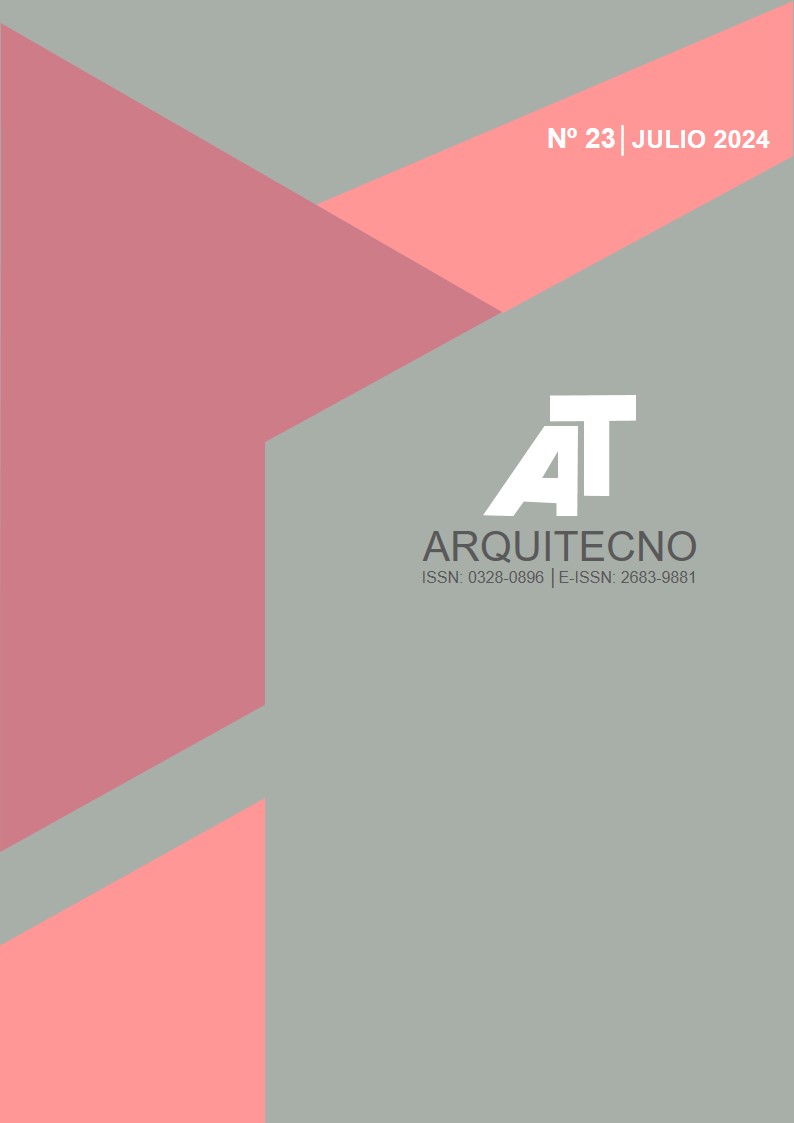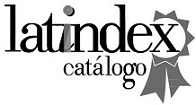Bioclimatic optimization of the envelope parameters of an open plan Kindergarten, in a very hot-humid climate
DOI:
https://doi.org/10.30972/arq.237561Keywords:
Thermo-lighting comfort, School architecture, Natural light, Bioclimatic design, Glazed areasAbstract
Considering the importance of the use and control of solar energy as a potential bioclimatic resource in the Northeast Region of Argentina, the validation procedure of a methodology for estimating optimal glazed areas is presented, in an existing kindergarten prototype of open typology in the city of Resistencia, Chaco. Based on a generic proposal, the improvements obtained are verified by combining variables not contemplated in current regulations for the calculation of lighting openings by orientation, in a very hot - humid climate, configuring for this purpose dynamic simulation models calibrated with in situ measurements. A reduction in the absolute maximum temperature of up to 3.4°C was obtained, which had an impact on the reduction of cooling requirements of up to 41% in November. This, in turn, allowed notable improvements in the spatial distribution of natural light, preserving an average of 500 lx.
References
Al-Ashwal N. T. y Hassan A. S. (2017) The integration of daylighting with artificial lighting to enhance building energy performance. AIP Conference Proceedings 1892(1):160010. DOI:10.1063/1.5005777
Baserga, M. (2020). Relación entre los parámetros de la forma edificatoria y el comportamiento energético en las escuelas de clima extremo de Argentina. Fin de Máster en Estudios Avanzados en Arquitectura. Escuela Técnica Superior de Arquitectura de Barcelona, España.
Boutet, M., Hernández, A., Jacobo, G., Martina, P. y Corace, J. (2011). Auditorías Higrotérmicas y Lumínicas de dos Edificios Escolares de Nivel Inicial de la Ciudad de Resistencia, en Condiciones Reales de Ocupación. AVERMA, Vol. 15, Pp. 29 - 36. ISSN: 0329-5184. Rep. Arg.
Boutet, M., Hernández, A. y Jacobo, G. (2012) Validación de Simulaciones Interactivas con SIMEDIF y ECOTECT, a partir de Auditorías Energéticas de un Edificio Escolar de la ciudad de Resistencia. AVERMA, Vol. 16, p. 27 – 34. ISSN: 0329-5184, Rep. Arg.
Boutet, M. y Hernández, A. (2020). Herramienta de estimación de áreas vidriadas óptimas para el diseño solar pasivo de edificios escolares en el clima cálido-húmedo de la Región N.E.A. ERMA, Vol. 46, pp. 49 - 60, 2020. e-ISSNa: 2684-0073 / ISSN impreso: 0328-932X. Rep. Arg.
Boutet, M. y Hernández, A. (2021). Generic Proposal for the determination of optimal glazed areas for school buildings in the Northeast Region of Argentina. Energy and Buildings 243(1):110988. https://doi.org/10.1016/j.enbuild.2021.110988
de Rubeis, T., Nardi, L., Muttillo, M., Ranieri, S. y Ambrosini, D. (2018). Room and window geometry influence for daylight harvesting maximization – Effects on energy savings in an academic classroom. Energy Procedia, Volume 148, p. 1090-1097. DOI:10.1016/j.egypro.2018.08.050.
Doulos, L., Kontadakis, A., Madias, E., Sinou, M. y Tsangrassoulis, A. (2019). Minimizing energy consumption for artificial lighting in a typical classroom of a Hellenic public school aiming for near Zero Energy Building using LED DC luminaires and daylight harvesting systems, Energy Build. 194, 201–217, https://doi.org/10.1016/j.enbuild.2019.04.033.
Esteves, A., Esteves, M.J., Mercado, María V., Barea, G. y Gelardi, D. (2018). Building Shape that Promotes Sustainable Architecture. Evaluation of the Indicative Factors and Its Relation with the Construction Costs. Architecture Research; vol. 8 p. 111 – 122. California. DOI:10.5923/j.arch.20180804.01
Flores Larsen, Silvana (2019). SIMEDIF 2.0 (Versión Beta). Software para el cálculo del comportamiento térmico transitorio de edificios. Manual del Usuario. INENCO – UNSa.-CONICET. Salta, Argentina.
IRAM 11603 (2012). Acondicionamiento térmico de edificios. Clasificación bioambiental de la República Argentina. Instituto Argentino de Normalización y Certificación.
IRAM 11605 (1996). Acondicionamiento térmico de edificios. Método de cálculo. Propiedades térmicas de los componentes y elementos de construcción en régimen estacionario. Instituto Argentino de Normalización y Certificación.
IRAM 11507 4 (2010). Carpintería de obra y fachadas integrales livianas. Ventanas exteriores. Parte 4. Requisitos complementarios. Aislación térmica. Instituto Argentino de Normalización y Certificación.
IRAM AADL J-2004 (1974), Iluminación Natural de Escuelas. Instituto Argentino de Normalización y Certificación y Asociación Argentina de Luminotecnia, Bs. As. Argentina.
Meresi, A. (2016). Evaluating daylight performance of light shelves combined with external blinds in south-facing classrooms in Athens, Greece, Energy Build. 116 p. 190–205. DOI:10.1016/j.enbuild.2016.01.009
Michael, A. y Heracleous, C. (2017). Assessment of natural lighting performance and visual comfort of educational architecture in Southern Europe. The case of typical educational school premises in Cyprus, Energy Build. 140, p. 443– 457, https://doi.org/10.1016/j.enbuild.2016.12.087.
MCEN - Ministerio de Cultura y Educación de la Nación (1996), Criterios y Normativa Básica de Arquitectura Escolar, Cap. IV. Condiciones de habitabilidad.
Mohelníková, J., Novotny´, M. y Mocová P. (2020) Evaluation of school building energy performance and classroom indoor environment, Energies 13 2489, https://doi.org/10.3390/en13102489, www.mdpi.com/journal/energies.
Reglamento General de Construcciones (1990). Ordenanza № 1681. Municipalidad de Resistencia, Provincia del Chaco. Actualización s/ Ordenanza N° 13915. Resistencia, 2022.
Yacan, S. D. (2014). Impacts of Daylighting on Preschool students’ social and cognitive skills. Master Tesis. Science, Faculty of the Graduate College at the University of Nebraska. http://digitalcommons.unl.edu/cgi/viewcontent. cgi?article=1010&context=arch_id_ theses.
Zomorodian, Z., Korsavi, S., Tahsildoost, M. (2016). The effect of window configuration on daylight performance in classrooms: a field and simulation study, Int. J. Architect. Eng. Urban Plan 26 (1) 15–24.
Published
How to Cite
Issue
Section
License
Copyright (c) 2024 María Laura Boutet , Alejandro Luis Hernández

This work is licensed under a Creative Commons Attribution-NonCommercial 4.0 International License.
Los autores ceden a Arquitecno los derechos de publicación de sus trabajos, toda vez que hayan sido admitidos como parte de alguno de sus números. Ellos, no obstante, retienen los derechos de propiedad intelectual y responsabilidad ética así como la posibilidad de dar difusión propia por los medios que consideren.





52.jpg)
